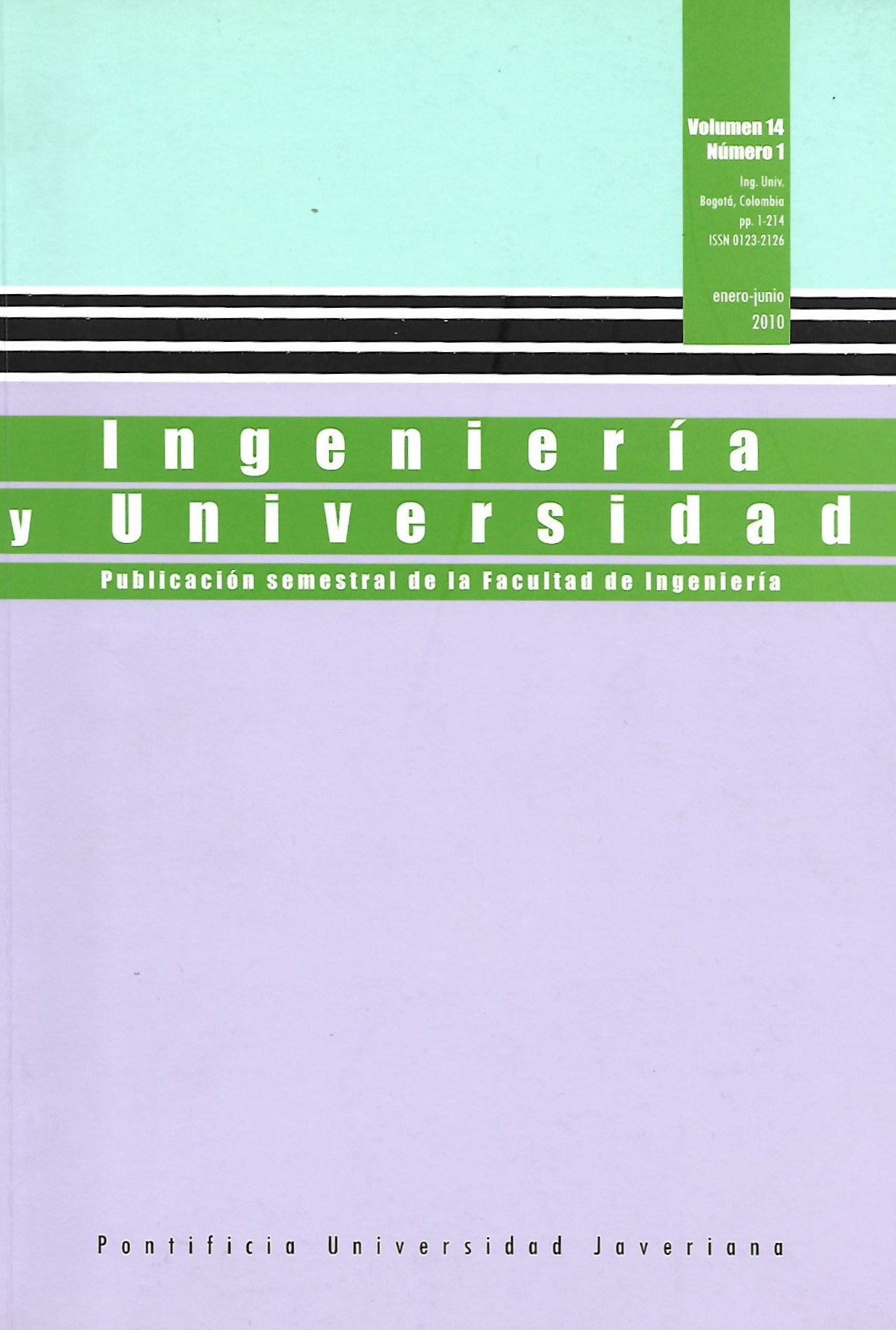Abstract
This paper presents a method to analyze elastic deformations and stiffness in two-dimensional structures with different assembly configurations among their elements. Initially, the optimal structure is obtained through topology optimization, and then a method to analyze different types of connections (hinge, flexible and rigid connections) in structural components is developed. Next, two widely documented examples are developed and validated. The versatility of the method and its functionality during both the design process and the selection of the best assembly option are determined. This work contributes to analyzing structures with different interconnection setups among their elements. Existing work is complemented through both the integration of topological design and the choice of the best setup features for a number of cases where assembly and design requirements are related.
BOOKER, J. D.; SWIFT, K. G. y BROWN, N. J. Designing for assembly quality: strategies, guidelines and techniques. Journal of Engineering Design, 2005, vol. 16, núm. 3, pp. 279-295.
BOOTHROYD, G. Product design for manufacture and assembly. 2a ed. New York: Marcel Dekker Incorporated, 2001.
CETIN, O. L. Decomposition-based assembly synthesis of family of structures. Tesis de Doctorado. University of Michigan, Department of Mechanical Engineering, 2003.
— y SAITOU, K. Decomposition-based assembly synthesis for maximum structural strength and modularity. Journal of Mechanical Design, 2004, vol. 126, núm. 2, pp. 244-253.
—. Decomposition-based assembly synthesis of multiple estructures for minimum manufacturing cost. Journal of Mechanical Design, 2005, vol. 127, núm. 4, pp. 572-579.
CHAN, S. L. y CHUI, P. P. T. Non-linear static and cyclic analysis of steel frames with semi-rigid connections. New York: Elsevier, 2000.
CHANG, D. C. Effects of flexible connections on body structural response. s. l.: SAE Transactions, 1974.
DHILLON, B. y O’MALLEY, J. Interactive design of semirigid steel frames. Journal of Structural Engineering, 1999, vol. 125, núm. 5, pp. 556-564.
HAYALIOGLU, M. y DEGERTEKIN, S. Minimum cost design of steel frames with semirigid connections and column bases via genetic optimization. Computers & Structures, 2005, vol. 83, núm. 21-22, pp. 1849-1863.
HUGHES, T. J. R. The finite element method: linear and dynamic element analysis. s. l.: Dover, 2000.
LEE, K. y NICOLAIDIS, E. A two dimensional model for joints in vehicle structures. Computer & Structures, 1992, vol. 45, núm. 4, pp. 775-784.
LYU, N. y SAITOU, K. Decomposition-based assembly synthesis of a three dimensional bodyin-white model for structural stiffness. Journal of Mechanical Design, 2005a, vol. 127, núm. 1, pp. 34-48.
—. Decomposition-based assembly synthesis for structural stiffness. Journal of Mechanical Design, 2003, vol. 125, pp. 452-463.
—. Decomposition-based assembly synthesis of space frame structures using joint library. Journal of Mechanical Design, 2006, vol. 128, núm. 1, pp. 57-65.
—. Topology optimization of multicomponent beam structure via decomposition-based assembly synthesis. Journal of Mechanical Design, 2005b, vol. 127, núm. 2, pp. 170-183.
LYU, N.; LEE, B. y SAITOU, K. Assembly synthesis for stiffness, dimensional adjustability and manufacturability. The Fourth International Conference on Engineering Computational Technology, Lisboa, Portugal, 7-9 de septiembre de 2004.
PAVLOVÇIÇ, L. et al. Cost function analysis in the structural optimization of steel frame. Structural and Multidisciplinary Optimization, 2004, vol. 28, núm. 4, pp. 286-295.
RUSS, J. C. The image processing handbook. 5a ed. Boca Ratón: CRC Press, 2007.
SIGMUND, O. A 99 line topology optimization code written in MATLAB. Structural and Multidisciplinary Optimization, 2001, vol. 21, núm. 2, pp. 120-127.
TAKEZAWA, A. et al. Structural optimization based on topology optimization techniques using frame elements considering cross-sectional properties. Structural and Multidisciplinary Optimization, 2006, vol. 34, núm. 1, pp. 41-60.
TOVAR, A. et al. Optimización topológica con restricciones de masa, desplazamiento y esfuerzo utilizando el método de los autómatas celulares híbridos. Tercer Congreso Internacional de Ingeniería Mecánica y Primero de Ingeniería Mecatrónica, Bogotá, Colombia, 20-22 de septiembre de 2006a.
—. Topology optimization using a hybrid cellular automaton method with local control rules. Journal of Mechanical Design, 2006b, vol. 128, núm. 6, pp. 1205- 1216.
YETIS, A. y SAITOU, K. Decomposition-based assembly synthesis based on structural considerations. Journal of Mechanical Design, 2002, vol. 124, núm. 4, pp. 593-601.
ZUO, K. T. et al. Manufacturing-and machining-based topology optimization. International Journal of advanced Manufacturing Technology, 2006, vol. 27, núm. 5-6, pp. 531-536.
This journal is registered under a Creative Commons Attribution 4.0 International Public License. Thus, this work may be reproduced, distributed, and publicly shared in digital format, as long as the names of the authors and Pontificia Universidad Javeriana are acknowledged. Others are allowed to quote, adapt, transform, auto-archive, republish, and create based on this material, for any purpose (even commercial ones), provided the authorship is duly acknowledged, a link to the original work is provided, and it is specified if changes have been made. Pontificia Universidad Javeriana does not hold the rights of published works and the authors are solely responsible for the contents of their works; they keep the moral, intellectual, privacy, and publicity rights.
Approving the intervention of the work (review, copy-editing, translation, layout) and the following outreach, are granted through an use license and not through an assignment of rights. This means the journal and Pontificia Universidad Javeriana cannot be held responsible for any ethical malpractice by the authors. As a consequence of the protection granted by the use license, the journal is not required to publish recantations or modify information already published, unless the errata stems from the editorial management process. Publishing contents in this journal does not generate royalties for contributors.


